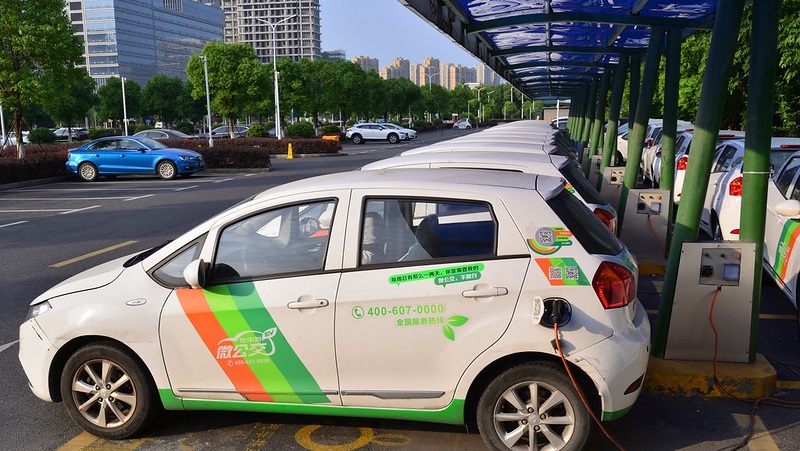China’s state planner has issued new rules on strengthening the integration of new energy vehicles with the electric grid, as the world’s biggest market for electric vehicles (EVs) aims to manage its power demand amid a transition to renewable energy.
The notice, published on Thursday by China’s National Development and Reform Commission, calls for the creation of initial technical standards governing new energy vehicle integration into the grid by 2025.
New energy vehicles will become an important part of the country’s energy storage system by 2030, it said.
As electricity demand surges due to the increasing popularity of new EVs, solutions are being sought by governments and other stakeholders to prevent power networks from being overwhelmed, as millions of people plug in their vehicles for charging at the same time.
Charging during off-peak hours as well as ‘vehicle-to-grid’ charging – where millions of EV owners could sell their EV batteries’ juice back to grid operators during peak hours – have been seen as potential solutions.
Last year, Brattle Group analyst Ryan Hledik told Climate Home that charging during off-peak hours should make EV use cheaper and therefore more widespread. But he warned that vehicle to grid technology and its business case are still in their infancy.
China is seeking to use these strategies to manage peak power demand through the integration of electric vehicles into the power system, according to the NDRC.
By 2025, NDRC said it would set up over 50 pilot programs in regions where conditions for vehicle-grid integration are relatively mature, including in the Yangtze River Delta, Pearl River Delta, Beijing, Sichuan and Chongqing.
China plans to build over 300 coal-fired power plants. But its government says it does not intend to run all of them at full capacity – instead running them only when needed to top up renewable electricity. So flattening demand peaks will reduce emissions.
Sudan’s Cop28 delegates “really hurt” by silence on their civil war
The transition away from fossil fuels to renewables is likely to make the supply of electricity more difficult to control. Power plants can ramp electricity production up and down in a way that solar panels and wind turbines can’t.
So across the world, governments are looking to similar policies to manage the demand for electricity so that it fits more closely with the supply of electricity – known as demand management.
In the Canadian province of Ontario, for example, electricity costs different amounts at different times of the day. This encourages people to use electricity at night when its cheaper.
Similarly in South Africa, the grid operator Eskom incentivises its biggest industrial customers to shift their use of electricity to when its most abundant.
In the US state of Vermont, a utility called Green Mountain Power is deploying Tesla Powerwall batteries to people’s homes.
Most of the year when there’s no shortage of power, residents use this as a backup generator but when there is a shortage the utility uses the electricity for the grid.
